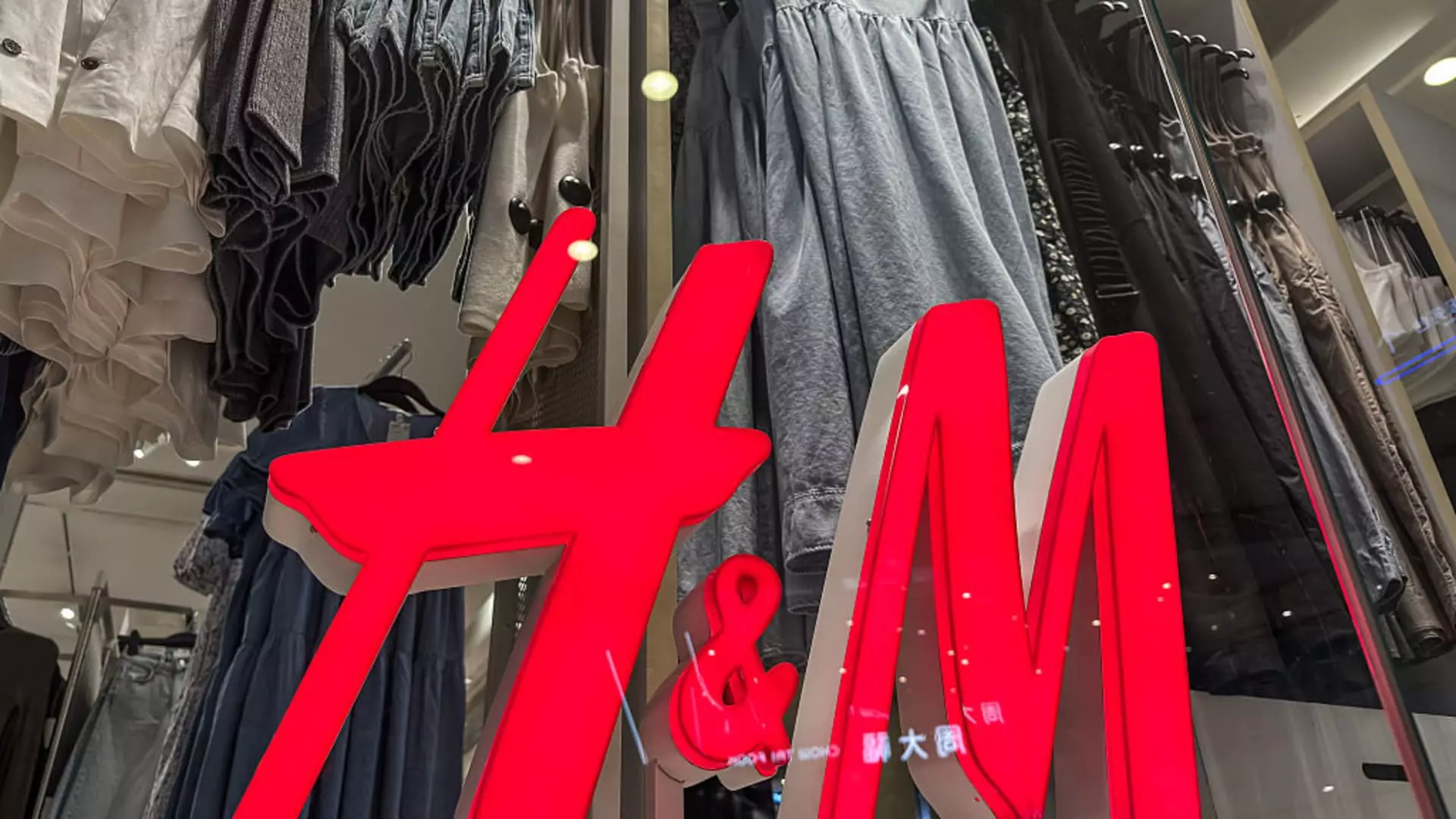Swedish clothing titan H&M has recently reported a modest uptick in demand that supposedly heralds a revitalization heading into the summer season. With a speculated 3% increase in sales for June, the company’s shares have experienced a near 4% rise, igniting a glimmer of hope among investors. However, it is crucial to peel back the layers of this optimism to reveal the troubling realities smudged beneath the surface. The apparent growth is not merely a product of robust consumer enthusiasm but rather a reaction to an economic climate rife with uncertainty, suggesting that the perceived increase in sales is less a victory and more a call to vigilance.
Despite H&M’s declaration of increased sales, particularly in an environment where consumers are characterized by cautious spending and heightened price sensitivity, their recovery appears tenuous. CEO Daniel Erver acknowledges that “uncertain times” lead consumers to exercise restraint, which paints a picture of a retail landscape marked by fragility rather than resurgence. The question looms: is this a rebound, or merely the calm before a more turbulent storm?
Caution Amid Increasing Costs: A Market on Edge
As the company navigates its financial waters, it has proactively noted the implications of U.S. trade tariffs, hinting at potential price hikes to accommodate rising costs. This approach raises significant eyebrows. When a company addresses consumers’ price sensitivity while hinting at future price increases, it signals a stark paradox: rising costs could negate any sales gains from the conservative consumer base that H&M has attracted. The gap that exists between maintaining competitiveness and ensuring sustainability is now precariously narrow.
Erver’s assertion that they are “monitoring developments” indicates a reactive rather than proactive strategy, which could position H&M at a disadvantage against competitors like Zara, who continue to gain market share. This tendency to react rather than act could lead to a misalignment in consumer expectations, especially in an age where price and value equilibrium are paramount to securing loyalty.
The Retail Landscape: A War Against Rivals
Furthermore, the struggle against lower-cost rivals such as Shein and Temu introduces a new level of complexity for H&M. With consumers increasingly drawn to affordable options, the once-proud brand faces the looming specter of obsolescence if it fails to adapt swiftly. The continuous soft sales reported over several quarters only amplify the pressure H&M faces to not just maintain but grow its market share. It is a classic David vs. Goliath scenario playing out in the modern retail battleground, where consumer loyalty is as ephemeral as the latest trends.
Moreover, the announcement of store closures in established markets further reflects a desperate attempt to recalibrate. While the plan to open new stores in growth markets is encouraging, the twin strategy raises questions about stability versus expansion. The juxtaposition could signal a company’s attempt to patch over weaknesses while simultaneously chasing potential, leaving stakeholders to wonder if this is merely a precarious balancing act.
The Currency Crisis: A Breath from Inflation’s Grasp
H&M’s financial performance is equally complicated by the external pressures of a volatile global economy. The elevated costs stemming from a strengthening U.S. dollar and higher freight expenses have undeniably pressured the bottom line, casting a shadow over projected profits. While Erver’s assertion that these “negative external factors” might turn positive in the latter half of the year serves as a glimmer of hope, it also reflects an uncertain path forward.
The reality is that a substantial turnaround depends not only on internal corporate strategies but also on resolving broader economic malaise. Fluctuations in currency values, ongoing trade disputes, and lingering impacts of inflation create an unpredictability that could further impede H&M’s aspirations for revitalization.
H&M’s next steps are pivotal. While there is a pronounced necessity for optimism within the company, that optimism must be grounded in a concrete strategy that addresses the overarching challenges it faces. The current 3% sales increase should be seen as a call to action rather than a cause for celebration. Retail is a battlefield, and H&M needs to navigate this terrain with both caution and conviction. The fight against bigger rivals and economic uncertainty will determine whether this moment is merely a transient blip or the beginning of a meaningful recovery.

